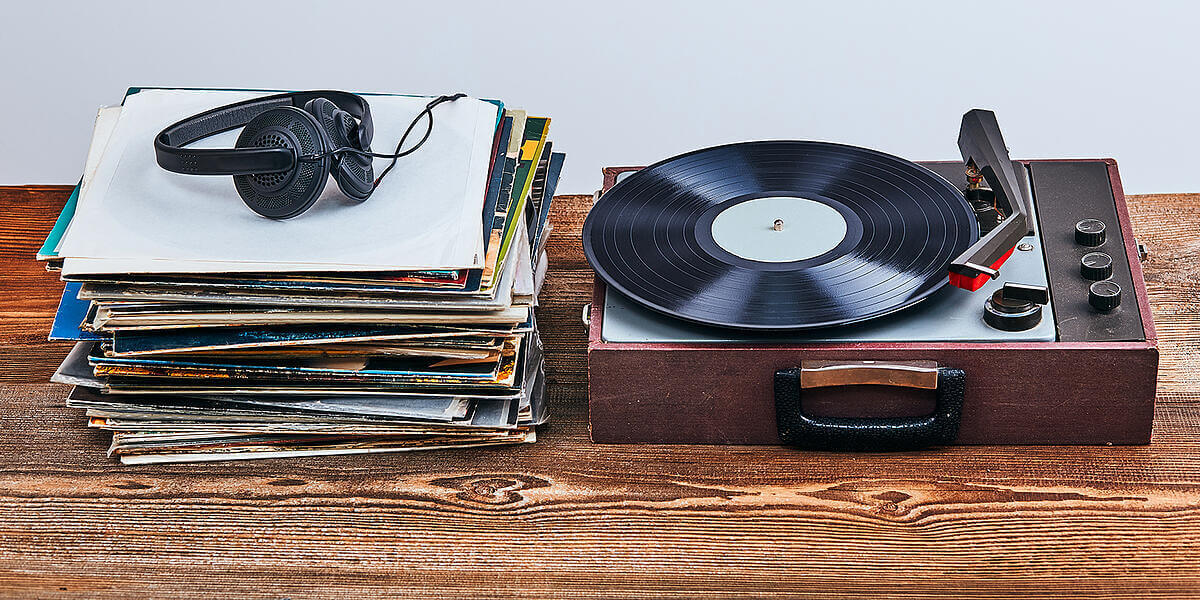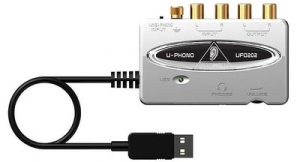
The sound of vinyl: How to turn vinyl to digital
Sometimes it feels like the only thing vinyl lacks is portability. Good news, you can take the sound of vinyl with you anywhere, if you have the patience.
There are many reasons why you might prefer vinyl to digital. The crisp sound of vinyl, the large-scale album artwork, the rarity, the whole physical collection part of it. Sometimes, it feels like the only thing vinyl lacks is portability.
The good news is that you can take your collection anywhere if you rip it to digital.
Before we get ahead of ourselves here, let it be known: this is a labor of love. Ripping vinyl isn’t as easy as ripping CDs (assuming your computer still has a disc drive and if not, remember those?) and transferring the sound of vinyl to digital requires a bit of care, attention and patience. But of course, you, as a lover of LPs, already possess all of those qualities. So, full steam ahead.
Rip your vinyl to digital
There are a few different hardware setups you can use to get that warm analog sound onto your smartphone. Here are the basics of the setup you'll need.
The gear
1. Software
GarageBand for Mac will do the trick. So will Audacity, a free, open-source audio editor.
2. A turntable
If you have a USB turntable, you can skip number three. Lots of turntables have a phono preamp, an analog-to-digital converter and USB output built in, and you’re going to need these components to rip your vinyl.
Make sure you have the correct cable to connect your turntable to your computer, like a USB cable or a USB to 1/8" audio input.
3. A phono preamp, an analog-to-digital converter and USB output
If you don’t have a USB turntable, read on. Turntables produce a phono output signal. This signal needs to be converted to an AUX signal before it can get hooked up to a sound system, or, in our case, an audio output. This is what a phono preamp does and if you have your turntable hooked up to an audio system, you probably already have a phono preamp in play.
To bring over your phono signal to your computer, you’ll also need an analog-to-digital converter. It does exactly what it says it does. It converts an analog signal into a digital signal. Next up is a USB output so you can connect your audio to your computer.
Your best bet for making this process as smooth as possible is to grab an all-in-one option like the Behringer UFO202 USB Audio Interface with a phono preamp built in.
If you have a preamp in your setup at home, grab the Behringer UCA222. It comes with an analog-to-digital converter and has a USB output.
It's worth it for the sound of vinyl but...
... vinyl can only be recorded in real time.
Like we said, this is a labor of love.
Before you get started converting vinyl to digital, make sure your turntable is level and your needle is clear of fluff. It's the little things that will make all the difference in a quality recording. You can also grab felt feet or a slip mat to level and stabilize your setup. The quality of the recording is only as good as your gear. Generally, the better the gear the better the sound. We’re not saying to go out and get a diamond tip needle, and just because your gear is old, doesn’t mean it's bad. It’s all about regular maintenance.
Obviously, your vinyl is in pristine condition, so you don’t have to worry about scratches or pops. Everything you hear when you play a record is going to show up on the digital recording, so that’s something to keep in mind.
Connect your turntable output to your computer's 1/8" audio input or USB input, depending on your set up. Launch your audio recording software and set your recording quality and other parameters. Choose the highest fidelity option and don’t apply any compression. Storage is cheap and you can always create compressed audio files later. Enter all your album metadata in manually. It’s a labor of love, remember? When ripping a CD, all the track, album and artist info comes along automatically but ripping vinyl? No such luck.
When you get started, keep your playback volume high enough that you’re getting all the detail but low enough that you don’t experience any clipping. Your computer won’t recognize individual tracks. Stop recording when you’ve finished with a track or mark tracks for breaks. Again, this has to be done manually. Labor of love. Did we mention that?
There are some who claim that vinyl is better than digital, and there are many reasons why you might want to hold onto that vinyl gold of yours. But we believe you can have the best of both worlds by taking the sound of vinyl with you on the go. It just takes a little work.
Have you ever ripped vinyl to digital?
What method did you use? Want to make a specific gear recommendation? Please do share in the comments below.
[cta link_text="Learn more!" url="/what-is-ting-mobile/" title="What is Ting Mobile anyway?" text="Learn about Ting, how it works and what you’d save. Sounds good? Get $25 to try it for yourself risk-free!" image="https://ting.com/wp-content/uploads/Blog_CTA_Graphic_LearnMore.png"]

.png?length=710&name=SMB%20Blog%20banner%20(5).png)

.png?length=710&name=Blog%20banners%20(12).png)